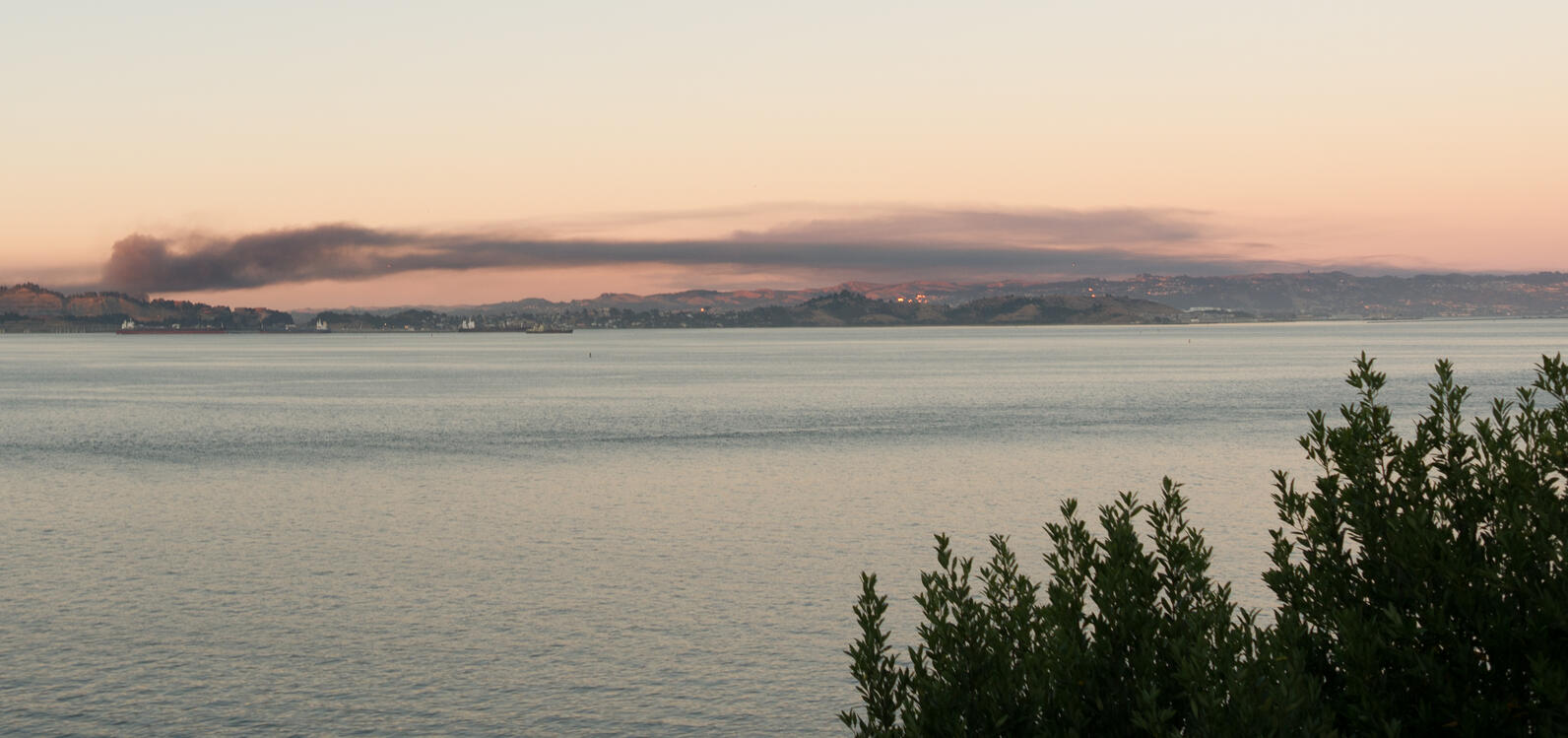Out of the 129 refineries in America, the Bay Area is home to five major ones.
These are the Valero Benicia Refinery, the Tesoro Golden Eagle Refinery, the Shell Oil Refinery, the Rodeo Refinery, and the Chevron Refinery. These refineries are spread throughout the Bay in the cities of Benicia, Martinez, San Francisco, and Richmond, respectively.
Refineries are harmful to the environment due to the large amounts of water and energy they consume and the fossil fuel emissions they produce. They contribute significantly to air pollution, greenhouse gas emissions, and water pollution, all of which compound to create layered environmental injustices. The Bay Area refineries produce around 800,000 barrels of gasoline per day and make up about a quarter of California’s total refining capacity. They are also the second-largest source of fossil fuel admissions in the Bay and in the past have released more than 14 million metric tons of CO2e emissions (the ‘e’ standing for equivalent, as in the number of metric tons of CO2 emissions with the same global warming potential as one metric ton of another greenhouse gas) in a single year.

Air pollution
Refineries contribute to climate change with the air pollution they create when the chemical byproducts of oil production are released into the air. Refineries emit toxic gasses and particles into the atmosphere daily, including sulfur dioxide and nitrogen oxides. Once these glasses are released, they mix with water and oxygen and can create acidic pollutants, leading to acid rain. This dangerous rain, besides being harmful to life above ground, is also harmful once it seeps into the ground. Acid rain harms the soil by dissolving nutrients such as magnesium and calcium, which plants need to be healthy. Acid rain can also cause aluminum to leach into the soil, which makes it difficult for plants to take up water.
Greenhouse gasses
Refineries also have a large footprint in terms of greenhouse gasses, which are gasses that trap excess heat in the atmosphere and cause the planet to warm. Carbon dioxide (CO2), methane (CH4), and nitrous oxide (N2O) are greenhouse gases released by refineries. According to the United States Environmental Protection Agency, refineries rank only behind power plants as having the most greenhouse gas emissions per facility.
Water pollution
Refineries release harmful chemicals and waste products into nearby bodies of water, such as rivers, lakes, and oceans. In the U.S. alone, refineries released 1.6 billion pounds of chlorides, sulfates, and other chemical pollutants into various bodies of water. In the Bay Area, the five refineries contribute significantly to water pollution by dumping their waste, which includes toxic chemicals, into the Bay. These chemicals affect the ecosystems of the Bay, at times killing off fish or increasing the likelihood of harmful algae blooms. Messing with the Bay's ecosystem affects the birds that come to eat the fish and puts everything off-balance.
Local injustices
Refineries don't just affect the air and water but also hurt the communities living nearby. The compounds released into the air have detrimental effects on human health, causing respiratory problems like asthma and increased risk of heart disease and lung cancer.
Although the five refineries in the Bay Area are producing tons of air pollution, the California Air Resources Board made a plan to meet California's new climate target to reduce greenhouse gas emissions by 40 percent across the entire economy by 2030. Refineries are the state's largest source of greenhouse gases, so this plan would force refineries, especially oil refineries, to lower their emissions by 20 percent. However, these refineries, much like the fossil fuel industry at large, are not going anywhere anytime soon; they will continue to have an impact on global warming even after lowering their emissions.



